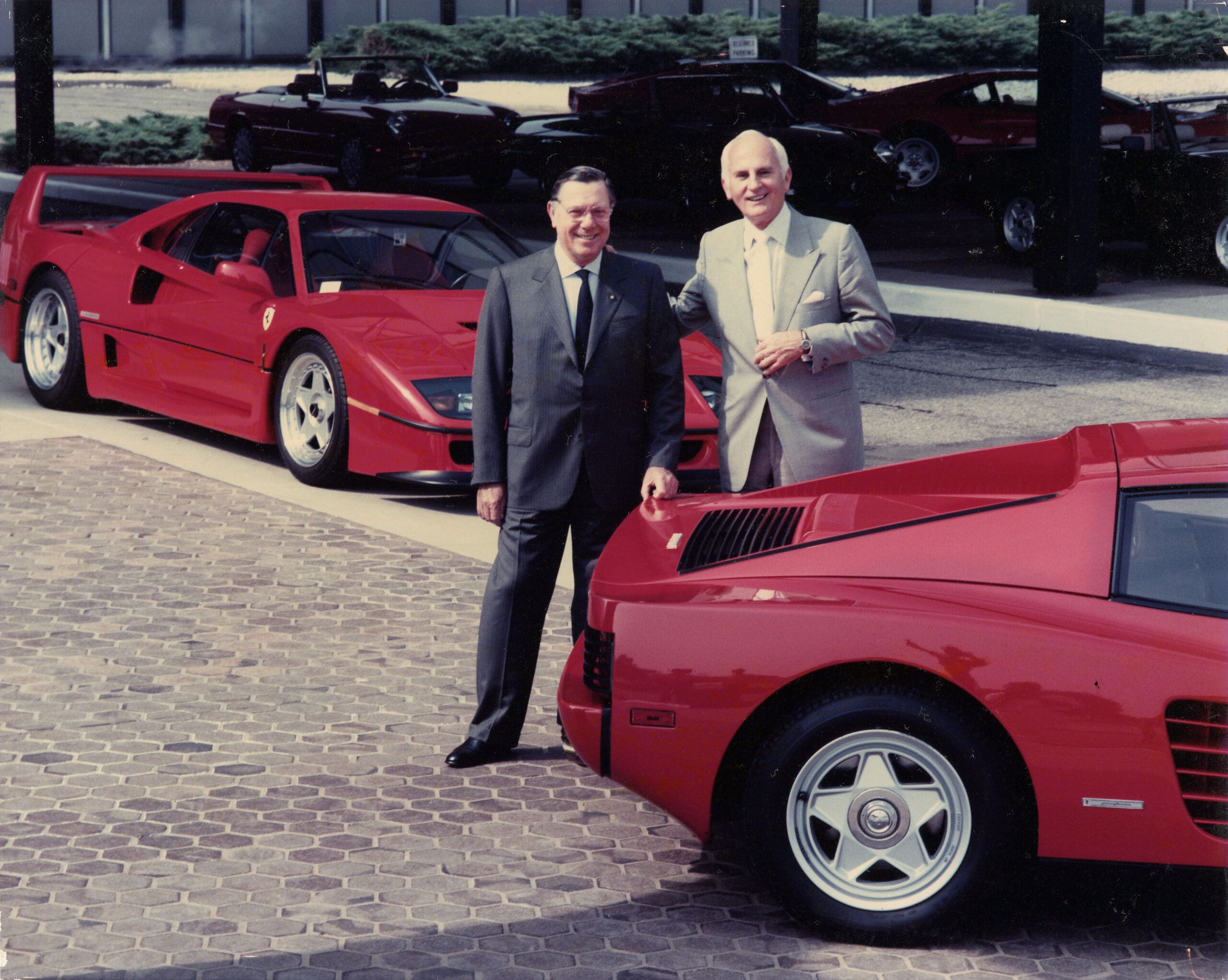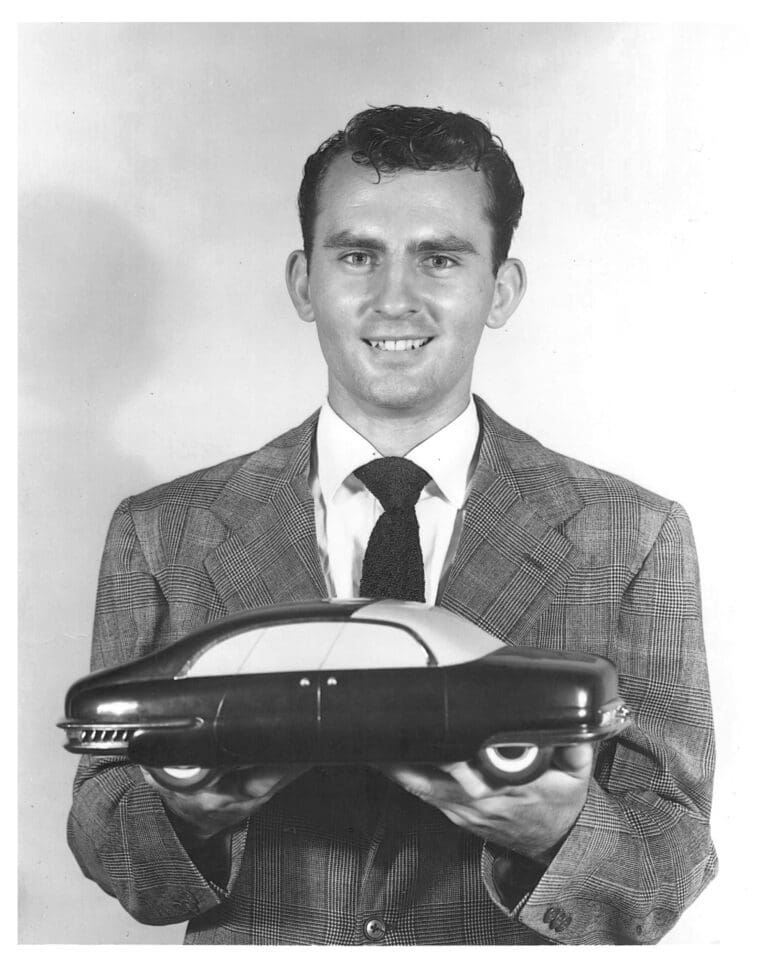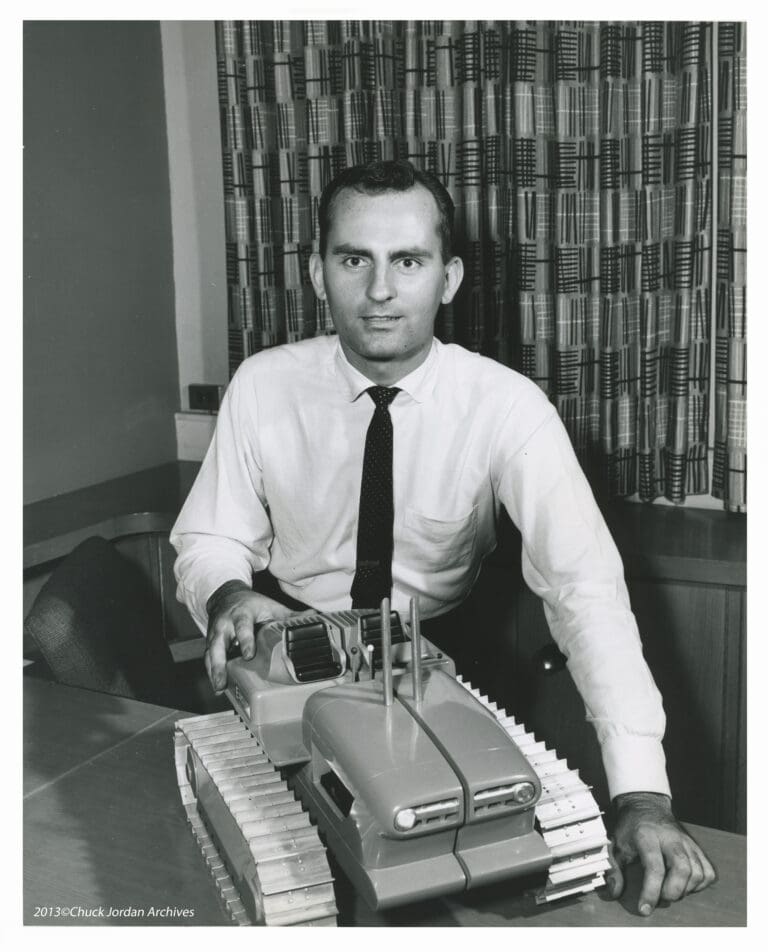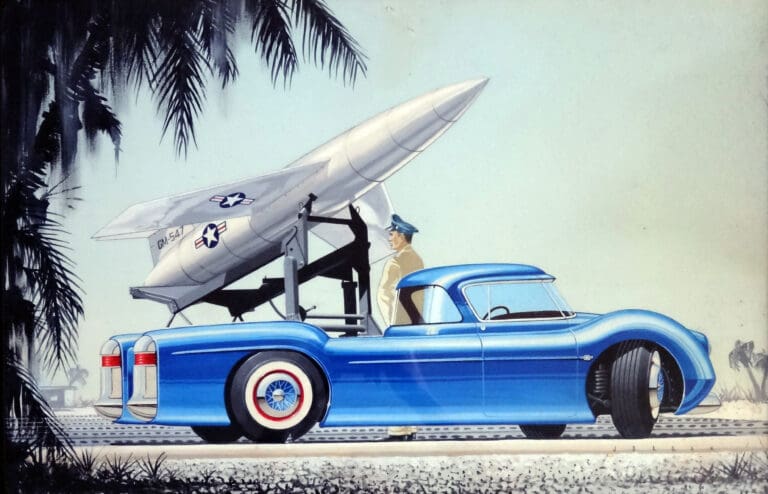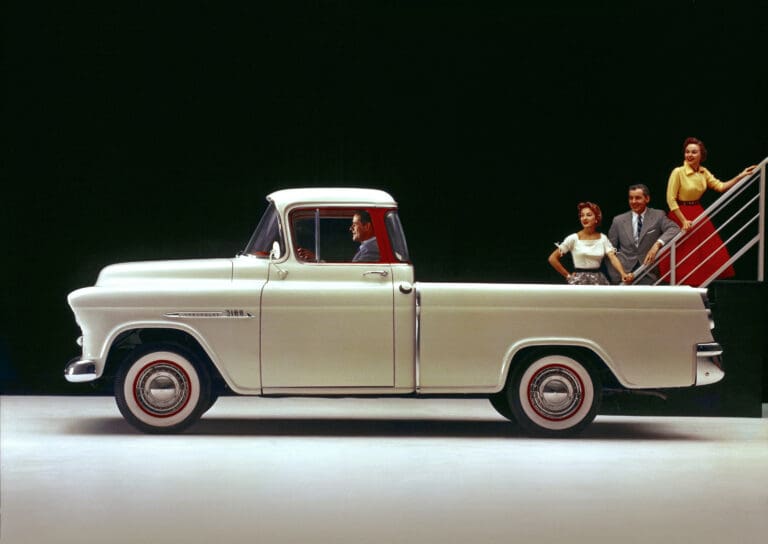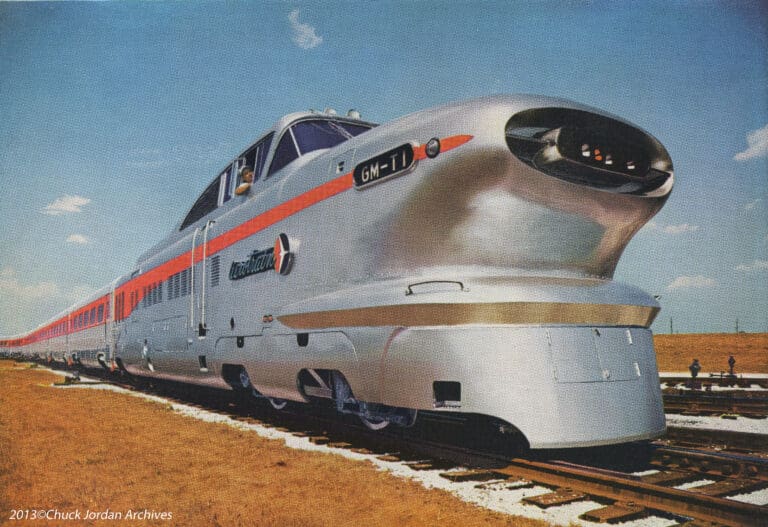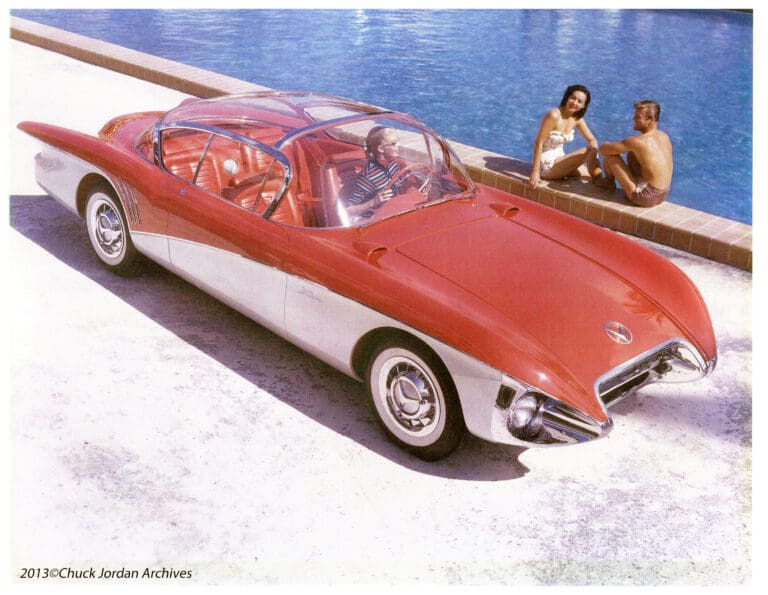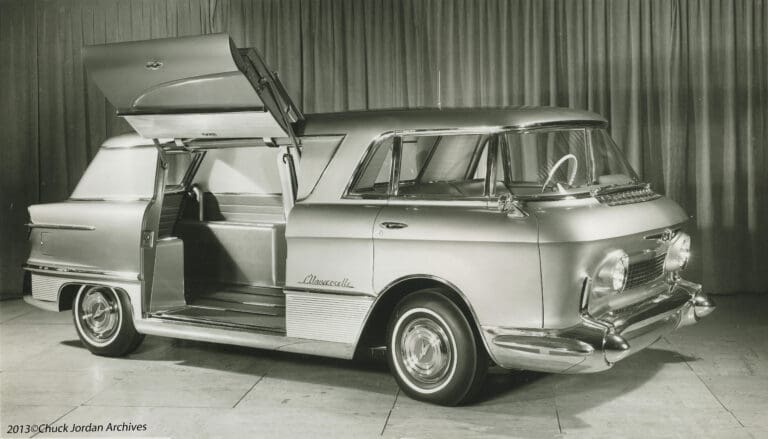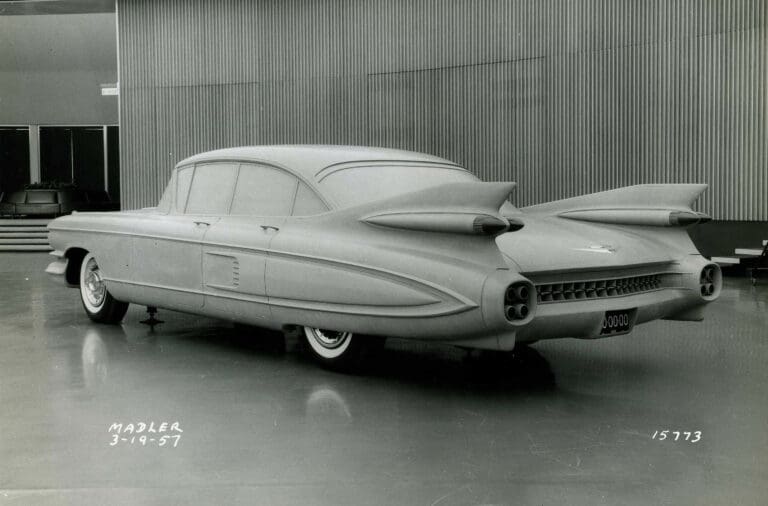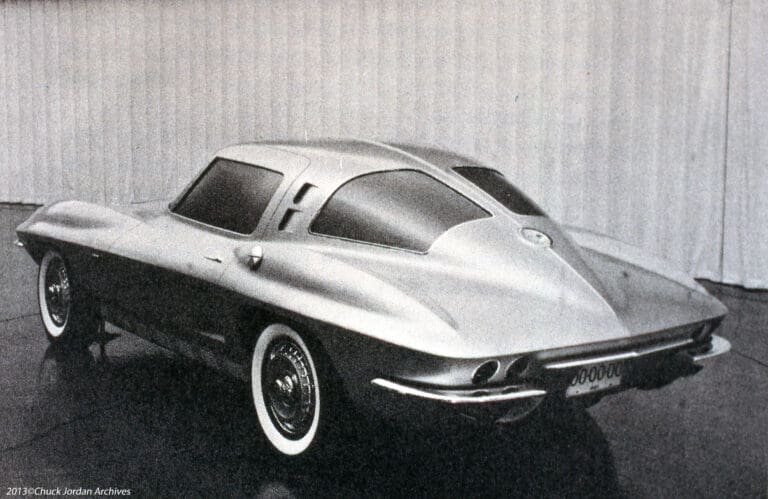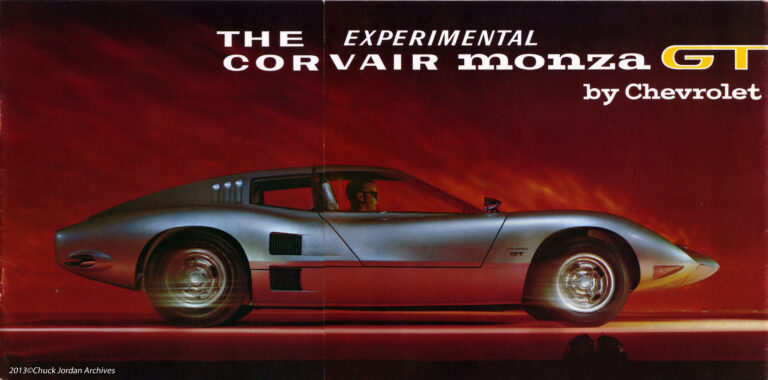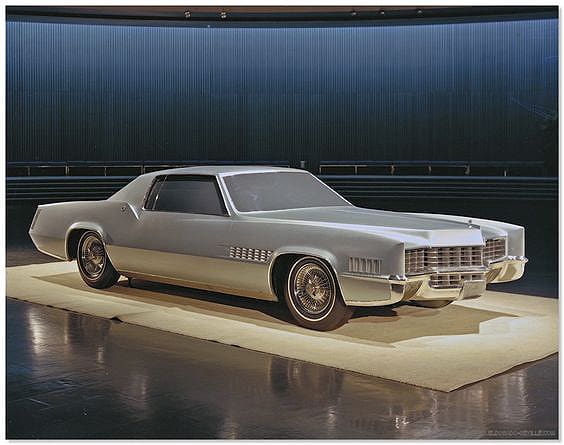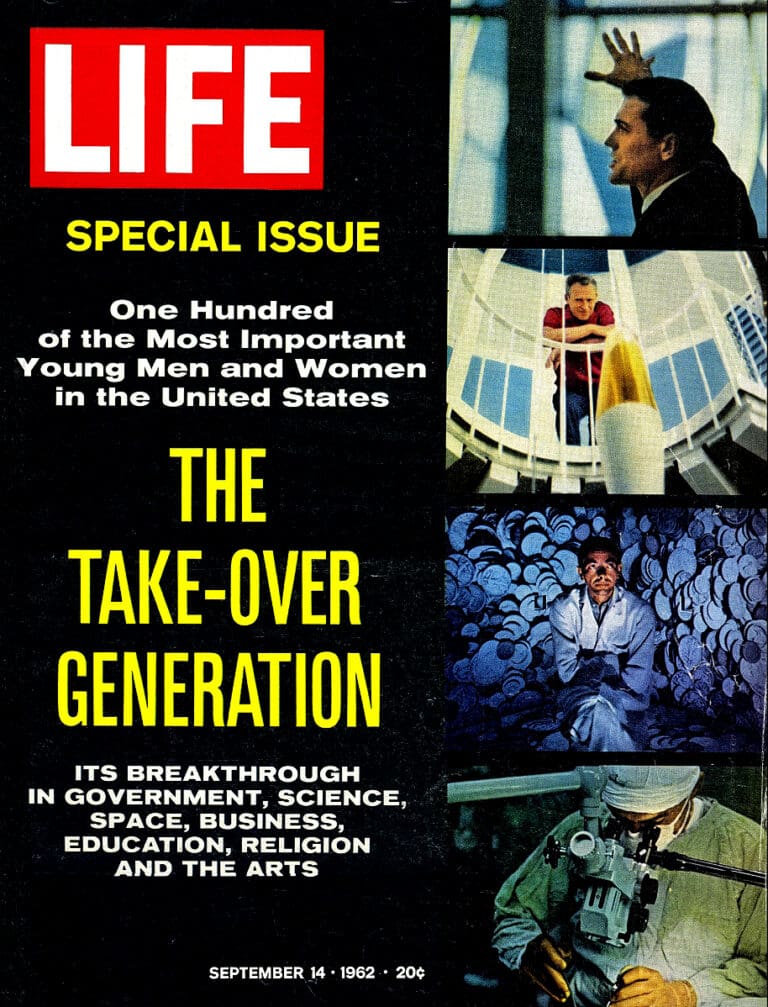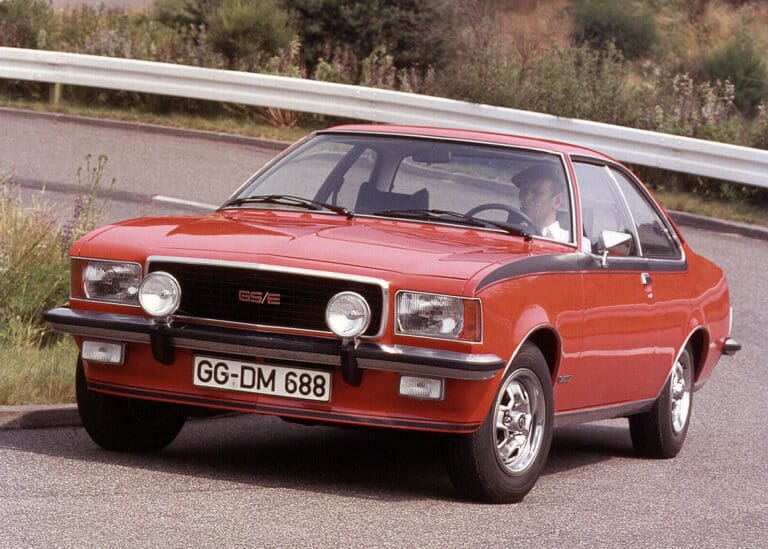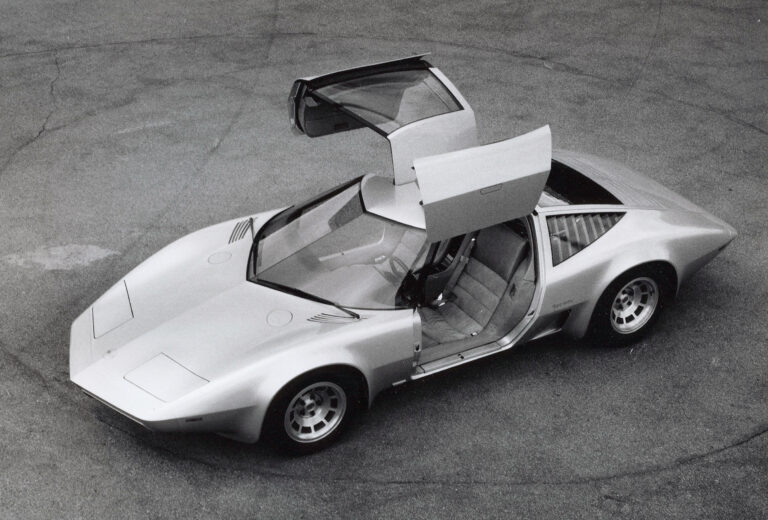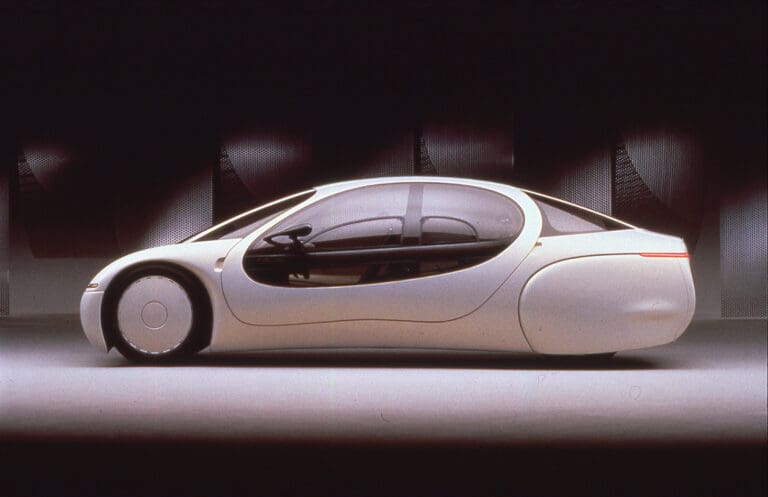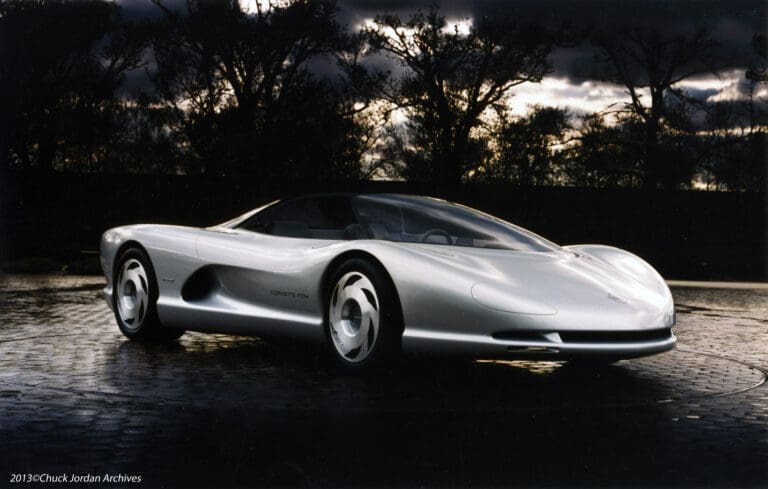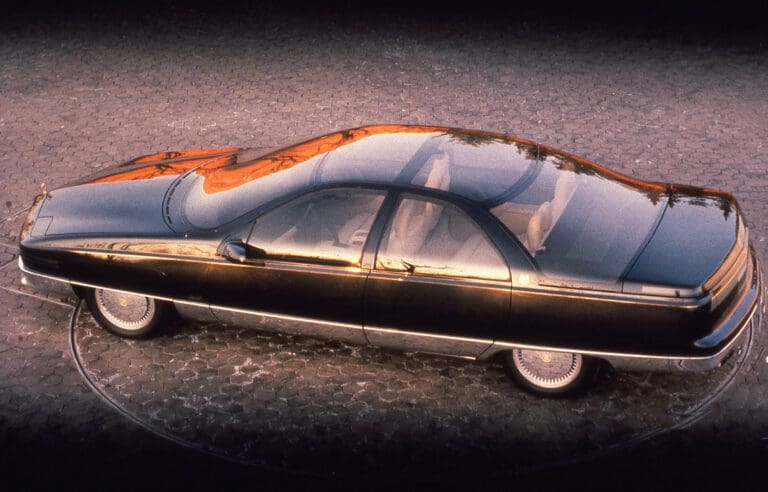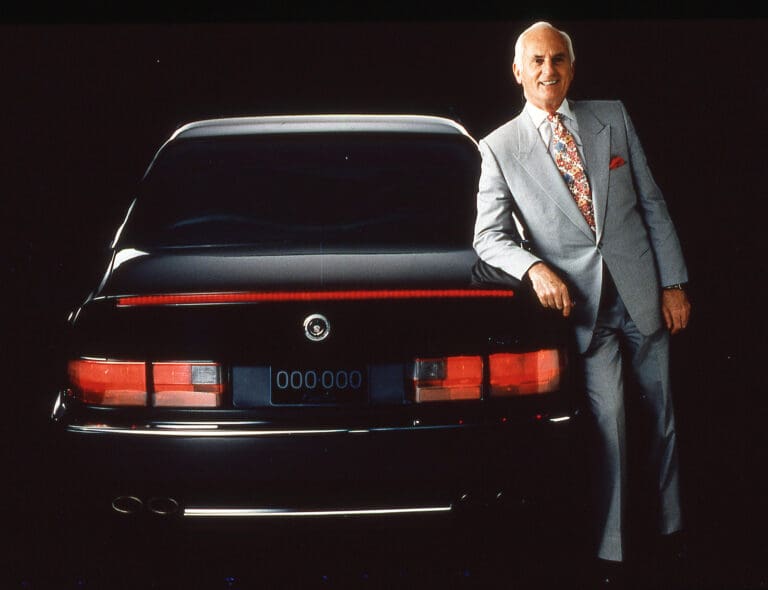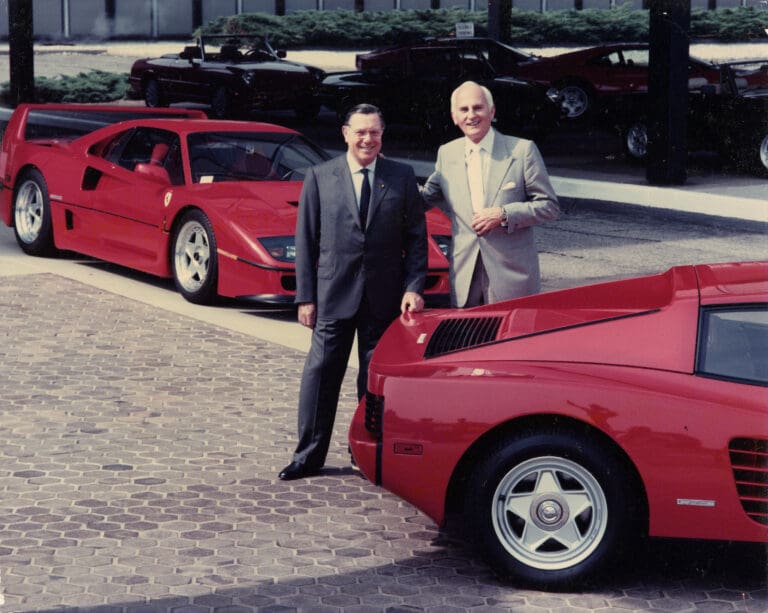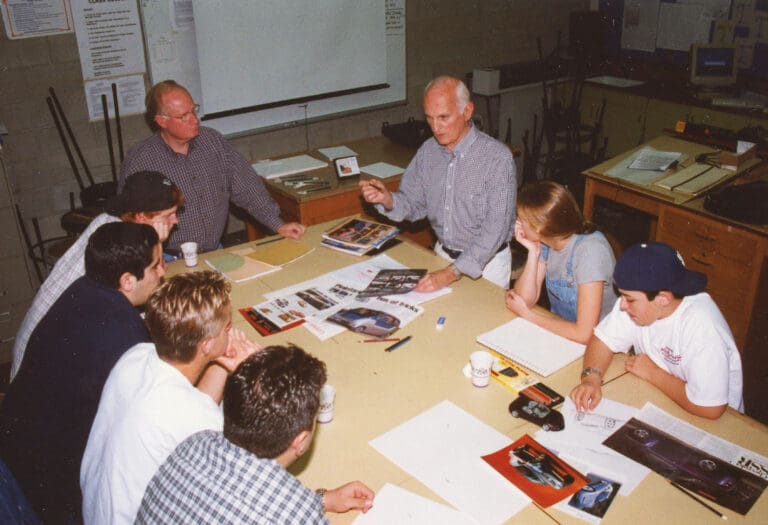Charles M. Jordan Endowed Scholarship
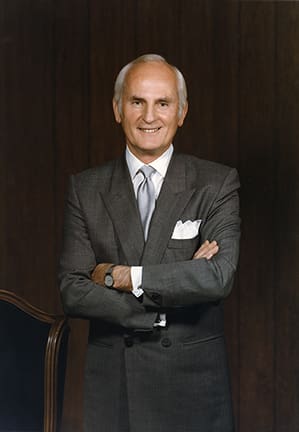
Caption: Charles M. “Chuck” Jordan (1927-2010)
The family of legendary General Motors designer Charles “Chuck” M. Jordan created the Charles M. Jordan Endowed Scholarship at CCS to ensure a permanent memorial to Chuck. This endowment provides scholarships to students in the Transportation Design department.
Lifetime Design Achievement: Chuck Jordan
Charles M. Jordan, who retired as GM vice president of design in 1992, was only the fourth person ever to hold that office. His passion for automobile design dates back to his early childhood.
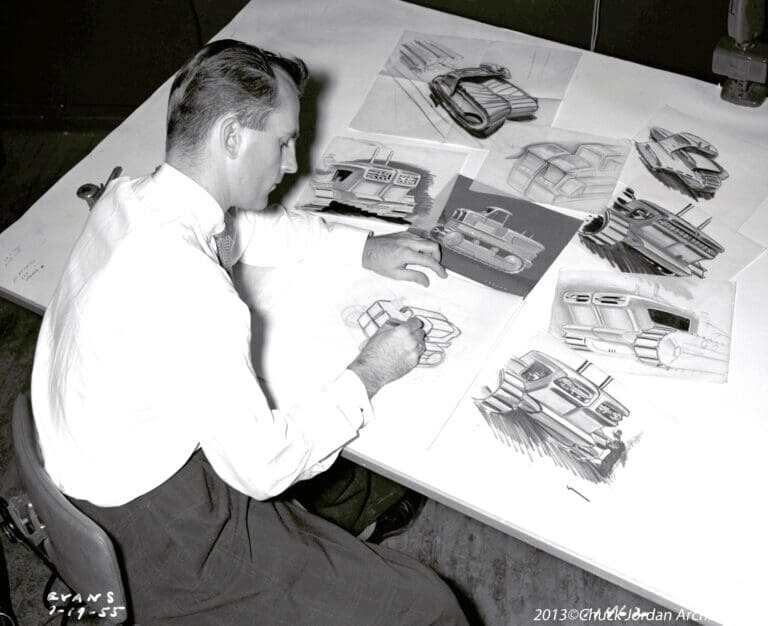
Chuck was born in Whittier, California, in 1927 and sketched cars while still learning elementary penmanship. His school note-books were filled with car doodles. It’s no surprise, then, that Chuck’s interest evolved into an ambition to become an automobile designer.
After graduating with honors from Fullerton (California) High School in 1945, Chuck enrolled in the Massachusetts Institute of Technology, where he studied engineering and design. As a sophomore at MIT, his natural interest in automobile design prompted him to enter General Motors’ Fisher Body Craftsman’s Guild model car competition. His design won the top national award and a $4000 scholarship. During the award week in Detroit, Chuck was taken aside by the assistant of then-GM Styling vice president Harley Earl, who told him, “When you finish college, there’s a job waiting for you here if you want it.”
Chuck accepted that offer and joined GM Styling In 1949 as a junior designer. He was initially assigned to GM’s truck studio. Having grown up on a citrus ranch, he learned to drive a 10-speed farm truck at age 12, so heavy-duty vehicles always appealed to Chuck. In fact, his senior thesis at MIT examined the design of trucks.
A Passion for Design
The Korean War interrupted his GM career, but while on military duty in Florida, he sent a steady stream of sketches and renderings back to the truck studio. These renderings helped define the design concept for the all-new 1955 Chevrolet and GMC trucks and, in particular, the trendsetting Cameo Carrier pickup, which he helped finish when he returned to GM in 1953 as the truck studio’s assistant chief designer. In addition, Chuck was instrumental in creating one of the first-ever concept minivans, the GM Motorama L’Universelle.
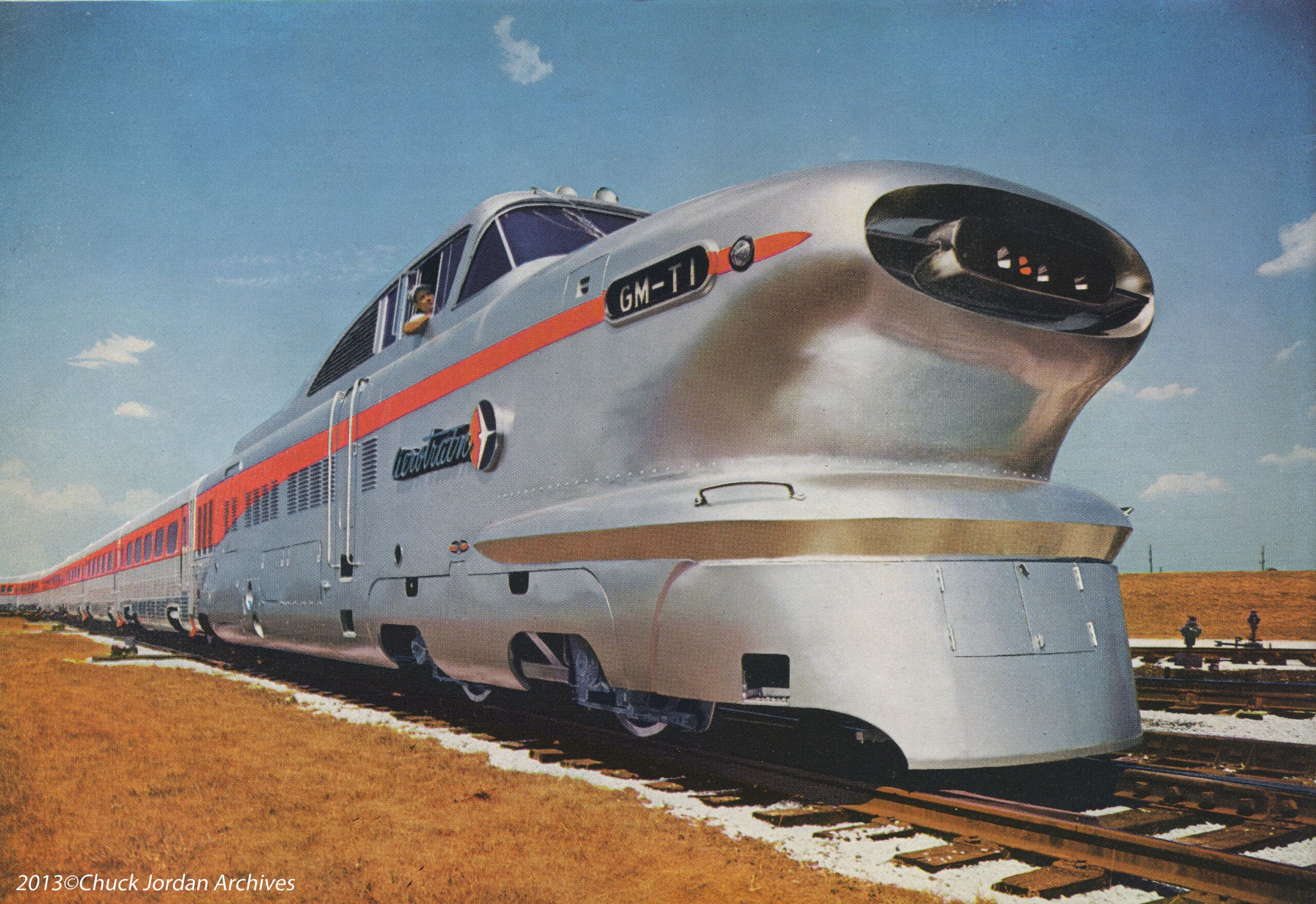
In October 1954, Harley Earl made Chuck chief designer of a studio dedicated to GM ‘s Euclid and Electromotive Divisions. Here he directed the design of an articulated, twin-diesel crawler tractor and the futuristic, lightweight GM Aerotrain.
The next year, 1955, Chuck was moved to a special projects studio where he headed the design of the 1956 Buick Centurion Motorama showcar and preliminary design concepts for the 1958 Corvette. In 1957, Jordan was promoted to chief designer of the Cadillac studio, where he became responsible for the design of all production Cadillacs from 1960 through 1964. Then in 1962, under Earl’s successor, Bill Mitchell, Chuck became the executive in charge of all GM design studios. He assisted Mitchell in the creation of some of Chuck’s favorite concept and production designs, among them the 1962 Monza GT, 1963 CorvettSting Ray, 1963 Buick Riviera, the 1966 Oldsmobile Toronado and the 1967 Cadillac Eldorado.
The “Generation” issue of Life magazine, named Jordan one of the 100 “most important young men and women in the United States.”
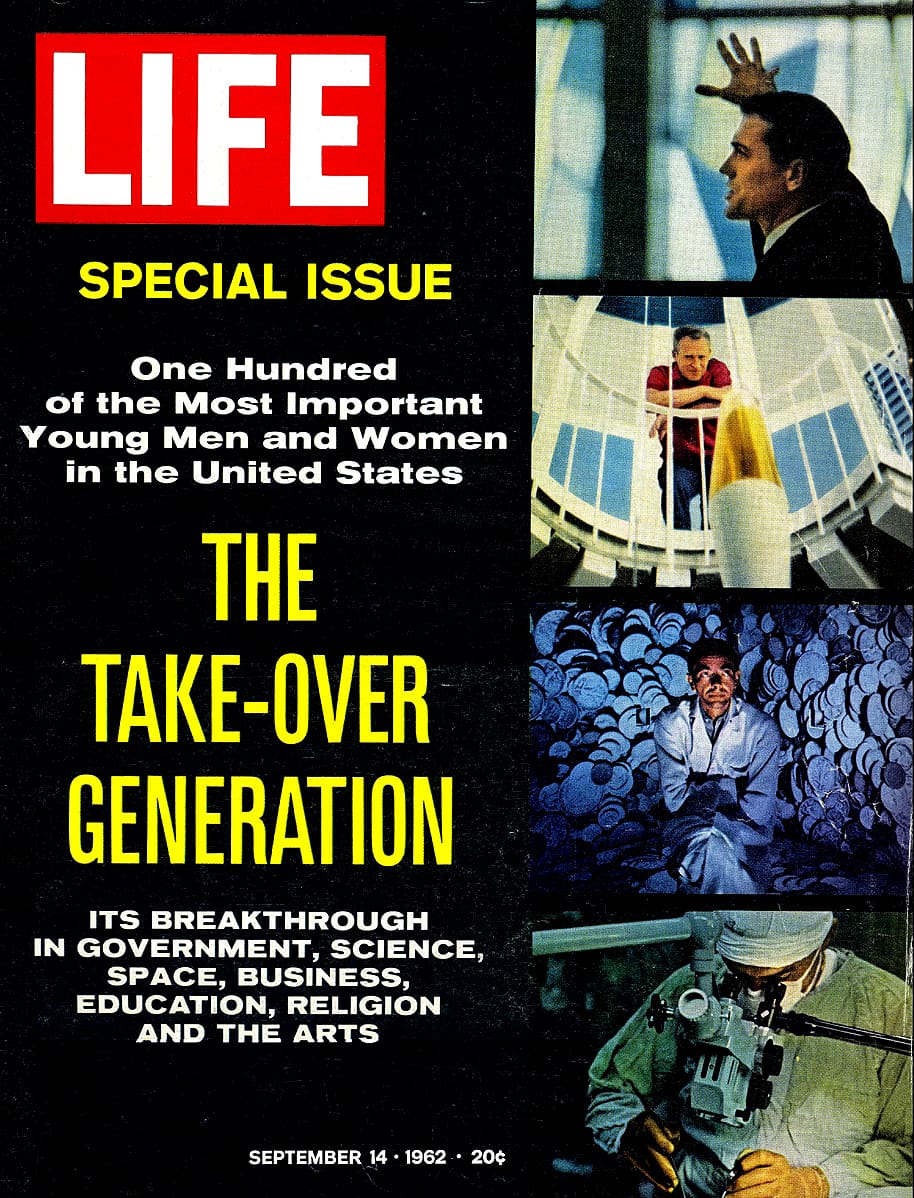
From 1967 to 1970, Jordan headed up Opel Design in Germany, where he finished the Opel GT and led the design of the new Manta and Kadet, the Rekord II and the Opel CD showcar.
When he returned to Detroit as Mitchell’s second in command, Chuck became intimately involved in the design of the 1973 Aerovette and the trendsetting 1977 Chevrolet Caprice, two designs of which he’s particularly proud.
After Bill Mitchell retired in 1977, Jordan continued as director of design under GM’s new vice president, Irv Rybicki. This proved to be a tough time for Chuck, partly because he was passed over for the vice presidency but also because automobile design was at a low ebb generally.
Then, when Rybicki retired in 1986, Chuck finally got his chance as vice president. He realized he’d have only six years to prove himself, and prove himself he did. He rejuvenated the creative spirit of the Design Staff team, cranked up advanced design to explore new styling directions, and produced an advanced image car for each of GM ‘s five auto divisions. These concepts became the basis for the Teamwork & Technology show at the Waldorf-Astoria hotel in New York.
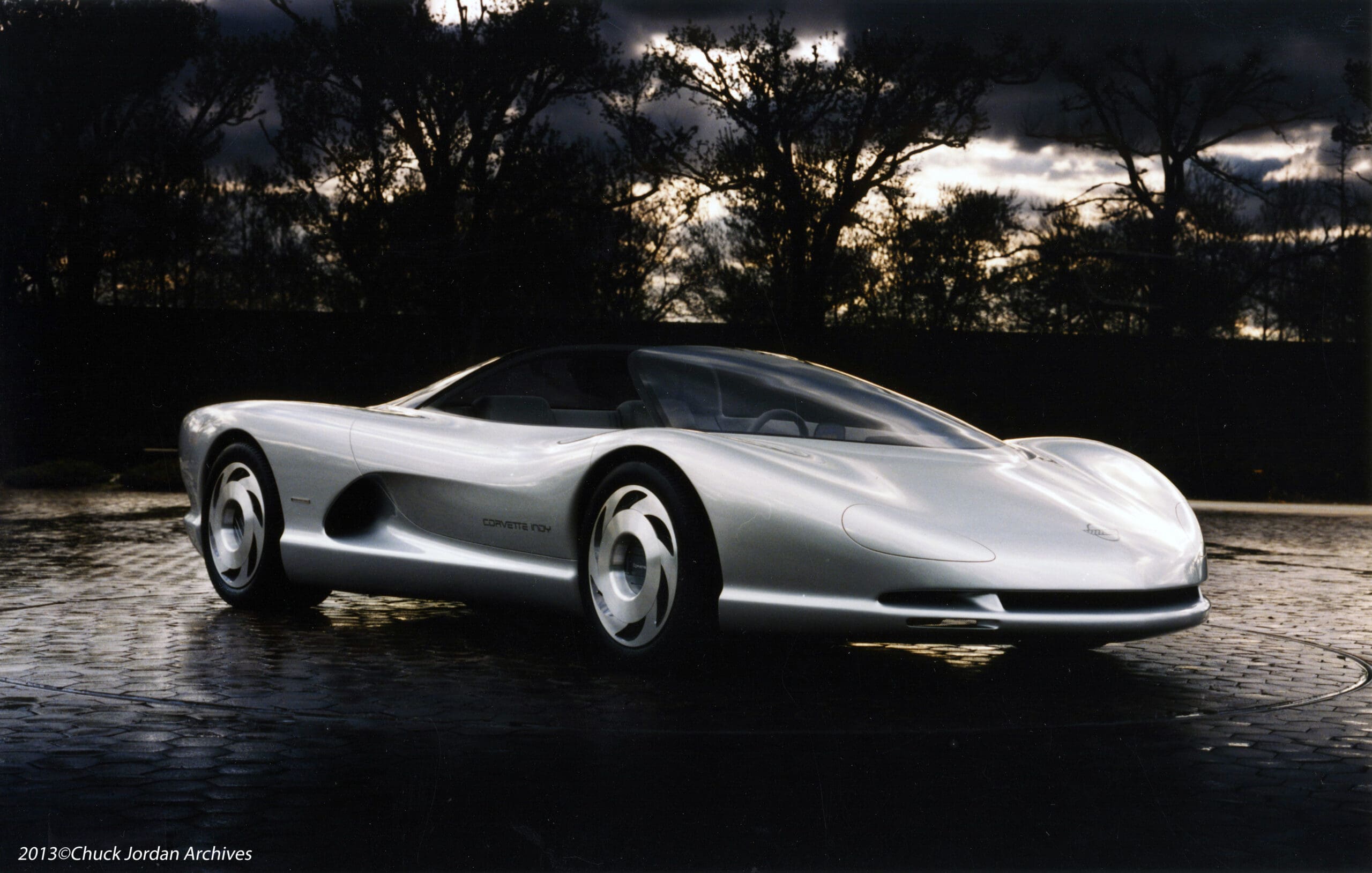
But more importantly, Chuck brought back the excitement and fun of designing cars. His assertion of “no dull cars” led to the design of a series of handsome and successful vehicles, among them the Corvette Indy, the GM Ultralite, the new Camaro/Firebird, the 1992 Cadillac STS and Eldorado, the Sting Ray III and the Oldsmobile Aurora.
At the time of Jordan’s retirement in October 1992, Jerry Palmer, GM’s director of advanced design, summed up Chuck’s career this way: “I don’t know many who have more passion and dedication for his first love, automobile design. Chuck makes things happen! But he makes things happen with flair, excitement and outstanding design judgment. He’s never been afraid to reach into the unexplored and inspire the rest of us to reach beyond what we think is possible. That’s true creative leadership.”
Others likewise recognized Jordan’s design leadership. In 1988, he received a distinguished service citation from the Automotive Hall of Fame. He was also given the Wally Ford Award by Detroit’s Center for Creative Studies plus an honorary doctorate from the Art Center College of Design in California in 1992. In 2001, CCS likewise gave Chuck an honorary doctorate.
Looking back, Jordan had this to say about his career: “My 43 years as an automobile designer were exciting and fun. I did what I loved to do, and it never seemed quite like work. The real satisfaction and reward for me has always been seeing a design I’m proud of coming down the street.”
